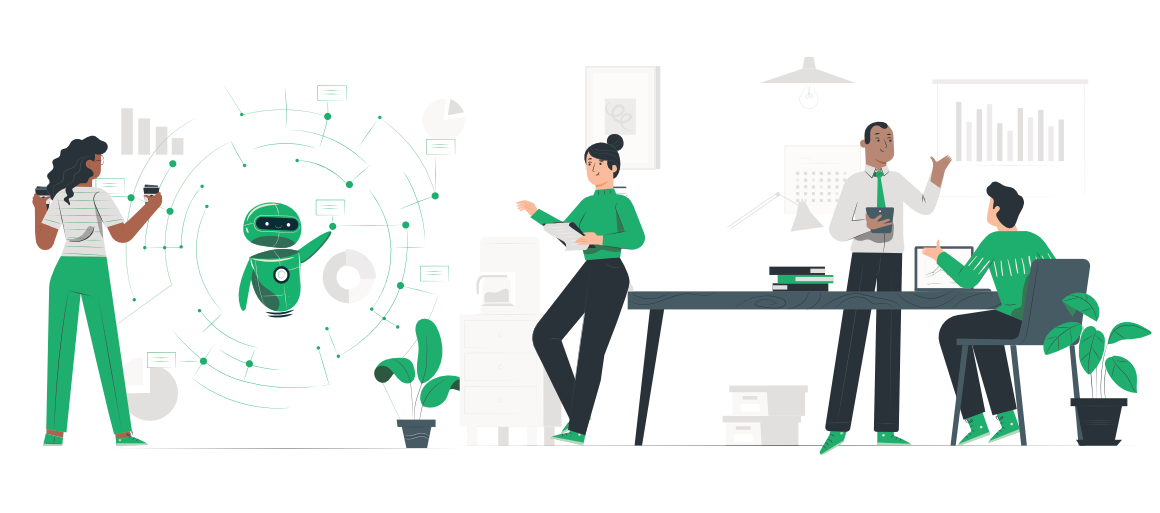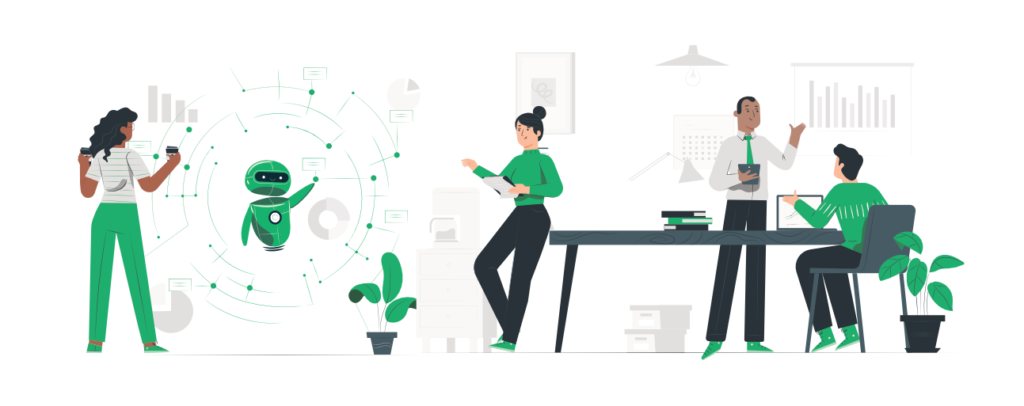
How Artificial Intelligence is Transforming Workplaces
Artificial intelligence (AI), data science, robotics, machine learning, and automation are revolutionizing businesses and the way we work. Advanced technologies have continuously impacted organizations, yet the impact, along with the rapid adoption of AI on organizations, is expected to transform and revolutionize the workplaces. According to McKinsey, the 2018 survey showed that 47% of businesses had implemented at least one AI Capability, and 30% have started to pilot an AI capability. It is known to grow leaps and bounds with a competitive landscape.
In this paper, we discuss how AI is transforming workplaces. Employees have a preconceived notion of jobs becoming obsolete. However, on the contrary, AI is helping to decrease redundancies and monotonous tasks to make way for innovation. Furthermore, thanks to AI, the barriers of exclusivity of teams have come down to make way for more inclusive interdisciplinary teams, which is inherent to an AI implementation.
The theoretical paper also gives an insight into how change could be inculcated through the Hitt & Miller concept of Planned Change. It also talks about how AI is driving the organizations to reposition their Organizational structure through retraining, design thinking, lean digital thinking, and agile methodologies to embrace AI solutions.
INTRODUCTION
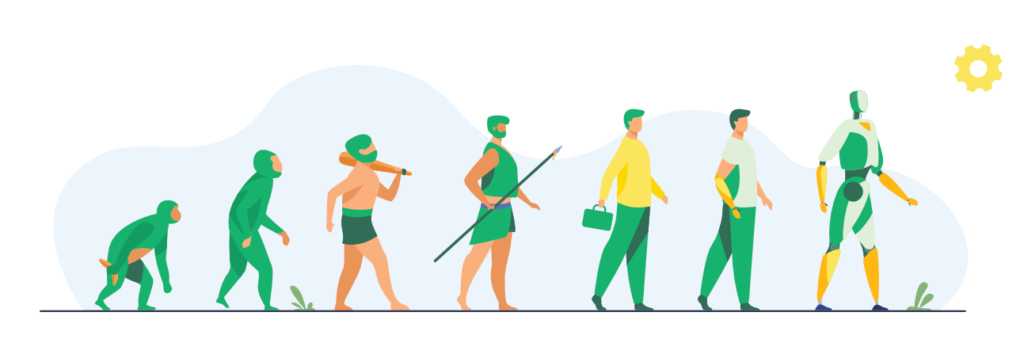
Every few decades, evolution galivanted through revolutions. Currently, one such revolutionary thrusts used by humans to evolve further is The Artificial Intelligence(AI) Revolution. This particular revolution is all about how Artificial Intelligence is transforming workplaces. AI and its supporting infrastructure have been growing at a blistering pace, and its potential to optimize businesses through better decision making has urged organizations to inculcate this revolution. However, to catapult the dynamic capabilities of artificial intelligence, organizations have to restructure and rewire, which is a significant change and is leading to a slowdown in adapting to AI.
INTRODUCTION TO AI
AI can be conveniently compared to a well-nurtured baby. Human intelligence right from birth evolves with memories, experiences, and emotions through nurturing and by nature. Whereas AI is nurtured with a collection of data that builds memory, deriving inferences from this memory builds patterns, and a collection of patterns builds Artificial Intelligence. Today, AI is omnipresent. Its capabilities are revolutionizing the way we work and reshaping organizations, economies, countries, and everyday lives. According to HBR, an estimate of global economic growth in AI is $13 trillion over the next decade.
However, when compared to the scope that AI can help organizations evolve, companies are lagging significantly in adapting to technological advances illustrated by AI. In comparison to high performers who apply core practices for using AI to drive value across the organization. Several organizations are implementing AI merely for a few processes in their business. Surveys show that less than 10% of the organizations are adopting AI in their core business processes. Resistance for adapting AI attributes to rigid organizations & leaders, and negative perceptions towards AI and its capabilities.
HOW TO PLAN THE CHANGE
The growth of an organization depends on the acceptance of change and response to pressures for change. To embed AI transformation into an organization, it needs to scale up the change to a broader perspective by involving business and operational heads. Organizations need transformational leaders to tread into a new path and use a participatory style for a successful transformation. According to Hitt & Miller, an effective way for the successful implementation of AI in organizations is Planned Change, which involves three steps:
Unfreezing: Leaders who wish to see a change should justify the change to associates & managers and expected outcomes of the change. Leaders should motivate employees to pave towards a new path rather than the conventional path. Leaders can accomplish this by providing detailed information about how AI can enhance performance through advancement. For example, Leaders can explain how AI use in pricing, predictive analytics in likelihood to buy, and customer-service analytics helped improve Marketing and Sales revenue. Furthermore, in supply-chain management, AI-powered users often cite sales and demand forecasting and spend analytics as use cases that generate revenue. Leaders should make an extra effort to convince their employees by educating them about how AI is effective when their capabilities are combined with AI.

Transforming: Firstly, Anadvancement towards AI requires an organization to indulge its business, operational, and analytics experts in interdisciplinary collaboration. Diversification of teams brings in new perspectives and ensures prioritizing broader organizational issues rather than narrowing to specific business needs. Secondly, Organizations should move to an agile environment from a risk-averse environment. Since an AI solution requires many iterations piloting a minimum viable product gives a better insight. Getting early insights through a test and learn method allows incorporating feedback into the next version and correct minor issues. The agile methodology of creating a minimum viable product enables the team to create a product in months rather than years and also helps reduce the fear of failure. Thirdly, organizations should try and eradicate any anticipated barriers which could disrupt the change. The most common barrier concerning AI has been the employee’s fear of jobs becoming obsolete. Leaders should address the fear by presenting multiple use cases where AI has benefited respondents to make decisions. Leaders need to rally the fact that AI is not eliminating jobs but to eliminate redundant tasks. According to the McKinsey survey report, the companies workforce size has decreased by less than 3% because of AI deployment. Another barrier is the gap between Data engineers and the Business team. According to HBR, a new realm of experts called analytical translators are bridging the gap in identifying roadblocks, and the AI applications are developed to meet the business needs. Understanding barriers upfront helps leaders to communicate with the workforce and also address them with additional training or incentives.
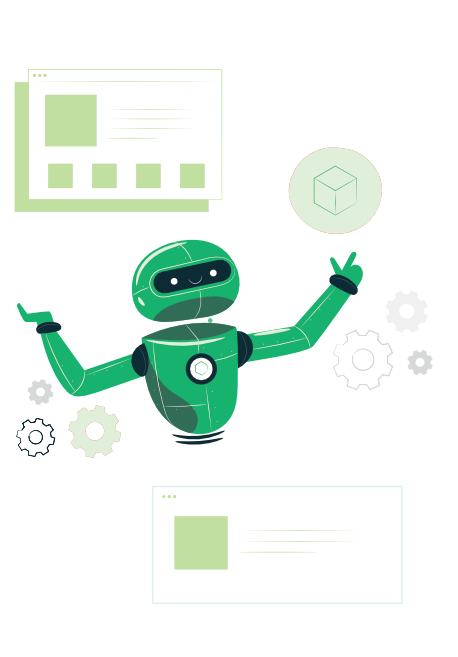
Refreezing: In this phase, the workforce should be offered continuous training in order to keep the organizational employees current with all the advancements and skills. Also, leaders should create a reward system that includes both monetary and non-monetary rewards, which motivates employees to work more efficiently. According to an HBR survey, 90% of the companies that had engaged in successful scaling AI practices had spent more than half of their budgets on activities that drove adoption, such as workflow redesign, communication, and training.

HOW TO RESTRUCTURE YOUR ORGANISATION
According to Hitt & Miller, the interventions used to create Organizational change are at the heart of organizational development. AI revolution is forcing Companies to restructure their organizations. Many AI-powered companies have shifted towards multidisciplinary teams with a participatory style as opposed to the traditional top-down hierarchal structures. According to HBR, Many AI-powered companies have developed Hubs and Spokes model to integrate AI solutions. Hubs are groups led by chief data officers or chief analytics officers. Hubs are responsible for data governance, AI recruiting and training strategy, and work with third-party providers of AI services and software. Spokes are the closest to those who will be using the AI systems. Spokes are responsible for tasks related to adoption, end-user training, workflow redesign, incentive programs, performance management, and impact tracking. There is also a gray area between these two with AI transformation responsibilities; building, designing, and testing the tools, and managing the change. Here in the gray area, Hub, spokes, and IT department share responsibilities depending on the firm’s AI maturity, complexity, and pace of innovation.
When a firm with higher AI maturity and a large data expert team is implementing an AI solution, the responsibilities shift towards spokes. Furthermore, an organization with higher complexity with rapid innovation shift responsibilities to the Hub. Depending on the complexity, competitive pressure, and Rapid innovation, organizations should establish interdisciplinary teams drawing talent from hubs and spokes and also have a governing coalition of business, IT, and analytics leaders that share accountability for AI initiatives.

From “building the AI- Powere Organization” by Tim Fountaine Brian
McCarthy, Tamim Saleh
July – August 2019
GOVERNING COALITION
A team of business, IT, and analytics leaders that share accountability for the AI transformation.
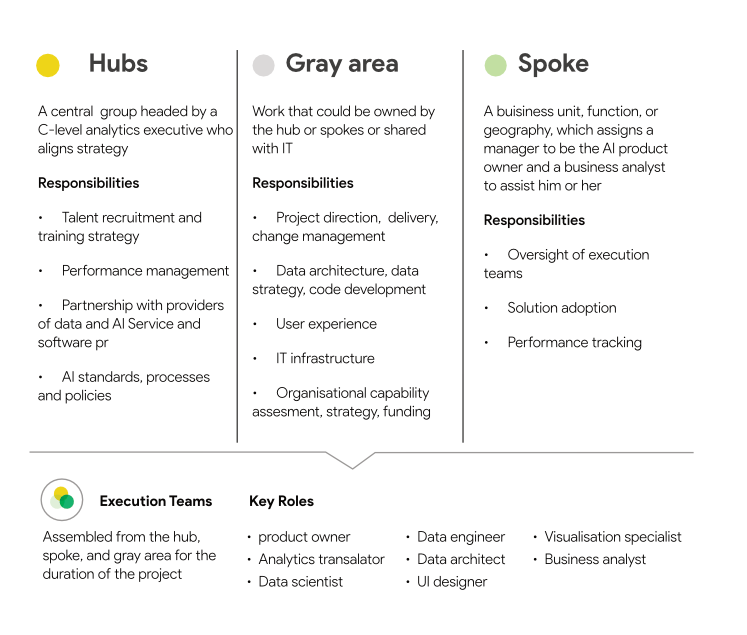
SO HOW ARE THE WORKPLACES CHANGING?
Early computer systems were more of a System of Records (SoR), which were the mainframe systems; their primary purpose was to house extensive amounts of information. Next came the Systems of Engagement (SoE) era, which were the data warehousing systems, with which businesses were able to engage with the data and derive information. Until now, Organizations used the Computational Thinking concepts to solve the problems, which addressed the specific process or procedural changes needed in the technology system to solve the business problem.
However, digitization and information technology started creeping into all business functions resulting in the Systems of Thinking (SoT) era. Think of these as ERP systems. Since this impacted a wider area of the business, it needed the buy-in from its participants, stakeholders, and its end-users. Design thinking concepts solved the problems of this era.
With the advent of AI technologies, which is the Systems of Intelligence (SoI) era, they herald the transformation of the entire organization along with its structure & governance. Organizations are designing a new framework to accommodate and harness its power by building on principles of design thinking, lean digital thinking, digital business transformation thinking & Agile methodologies resulting in below transformations:
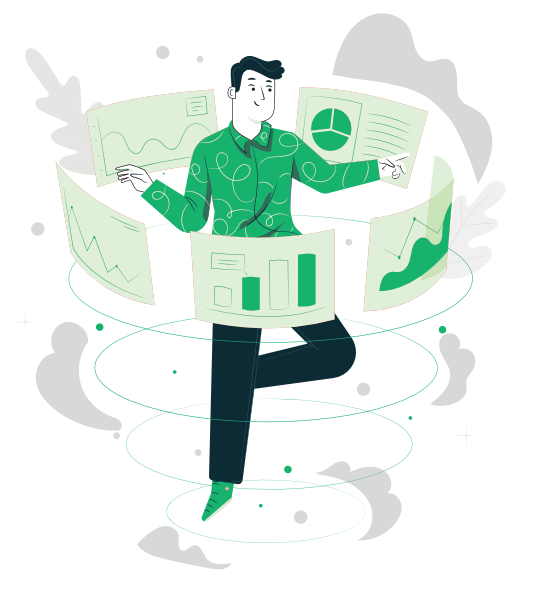
- Shared Vision: Organizations are positioning themselves back to an entrepreneurial stage to get the buy-in and shared vision of the transformation from all its participants.
- Empathetic Designs: More human elements are considered in the transformation by incorporating Design thinking principles.
- Better Governance: Digital Ownership is shifting from IT siloed to shared ownership by respective business heads.
- Increased Profitability: AI can eliminate the majority of redundancies in business operations, thus improving efficiency, which directly is improving productivity and profitability.
- Improved Innovation: With the majority of the current tasks handled by AI, workplaces are geared towards creativity and innovation.
- Continuous Training: There is a shift of emphasis on continuous learning and retraining to be able to adapt to the rapidly changing AI technologies continually.
To conclude, here is an apt quote in Sanskrit “Samyak Sarati Iti Samsaarah” – that which flows incessantly is creation. And ‘flow’ naturally means ‘change.’ In order to be successful and sustainable, organizations need to continuously engage themselves in change by discarding old ideas & evolving new ones. This is the fundamental building block of innovation and creating a competitive advantage.
-Sagarika Kumar
BIBLIOGRAPHY
Cam, A., Chui, M., & Hall, B. (2018, November). Global AI Survey: AI proves its worth, but few scale impact. Retrieved from https://www.mckinsey.com/featured-insights/artificial-intelligence/global-ai-survey-ai-proves-its-worth-but-few-scale-impact?cid=other-eml-alt-mipmck&hlkid=9551985a87694455862463669c8647dd&hctky=11625420&hdpid=5b270382-a9ca-4baf-b803-e4cb233f2619.
Chui, M., & Malhotra, S. (2018, November). AI adoption advances, but foundational barriers remain. Retrieved from https://www.mckinsey.com/featured-insights/artificial-intelligence/ai-adoption-advances-but-foundational-barriers-remain.
Fountaine Leads McKinsey Analytics in Australia and New Zealand and advises healthcare leaders on a range of policy and operational issues By Brian McCarthy Brings the best of analytics to guide insight-driven transformations, T., McCarthy Brings the best of analytics to guide insight-driven transformations, B., & Saleh Pushes the cutting edge of advanced analytics to guide business transformations and boost the effectiveness of strategic decision making, T. (2019, June 18). What it really takes to scale artificial intelligence. Retrieved from https://www.mckinsey.com/business-functions/mckinsey-digital/our-insights/digital-blog/what-it-really-takes-to-scale-artificial-intelligence.
Fountaine, T., McCarthy, B., & Saleh, T. (2019, June 18). Building the AI-Powered Organization. Retrieved from https://hbr.org/2019/07/building-the-ai-powered-organization.
Hitt, M. A., Miller, C. C., & Colella, A. (2015). Organizational behavior. Hoboken, NJ: Wiley, 448-478.
Marr, B. (2019, June 6). Artificial Intelligence In The Workplace: How AI Is Transforming Your Employee Experience. Retrieved from https://www.forbes.com/sites/bernardmarr/2019/05/29/artificial-intelligence-in-the-workplace-how-ai-is-transforming-your-employee-experience/#14a313b453ce.

